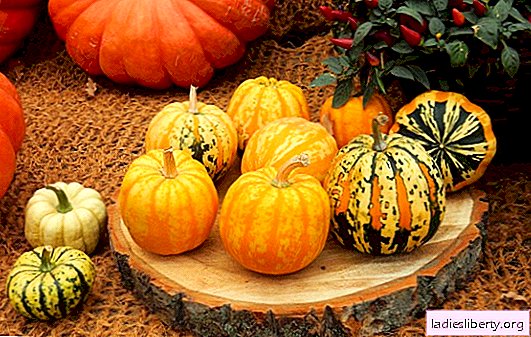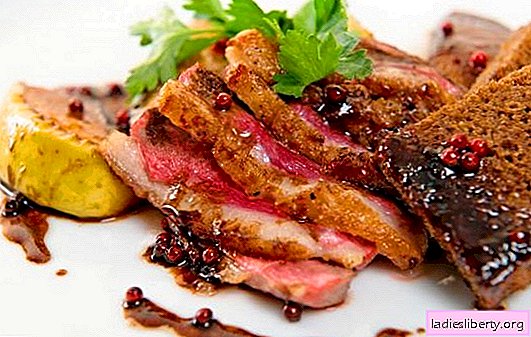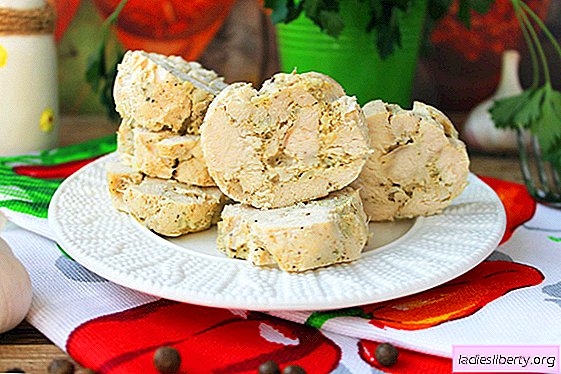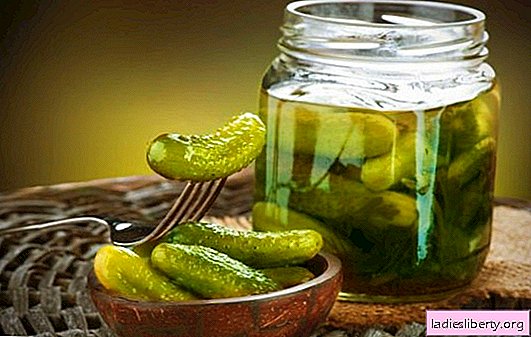
Previously, it was believed that pumpkin is a southern plant and in moderate latitudes it simply does not have time to ripen before the onset of cold weather. Today, breeders have bred more than 100 pumpkin varieties that are best adapted to difficult growing conditions. Each variety has its own advantages, disadvantages and is different in taste. How not to get confused in the choice and get a good pumpkin crop? We offer a selection of the most popular varieties for different regions of the country.
Varieties and classification of pumpkins
All varieties of table pumpkin are divided into several groups:
• nutmeg;
• large-fruited;
• hard bark.
Of these, early, middle and late ripening are distinguished. Early pumpkins are harvested at the end of summer, they go to food, are not stored for long. Middle and late varieties have good keeping quality, portability and excellent taste, which does not deteriorate during storage.

There are still decorative varieties of vegetables with fancy fruits that are used only for interior decoration, and fodder suitable for animal husbandry.
The best nutmeg pumpkin varieties for the South and the Middle Strip
Nutmeg pumpkin is considered the most delicious. It is easy to recognize by the rich color of the pulp, nutty aroma, thin peel and elongated shape of the fruit. The color of the seeds is yellow-brown. Nutmeg varieties mature late, suitable for winter storage. But they have one drawback - they are very demanding on heat and sunlight. In the southern regions they grow seeds by sowing in open ground, and in the middle zone only through seedlings or in greenhouses.
The pumpkin "Vitamin" is considered the most popular grade. Its pulp contains a lot of carotene, which makes it almost red, sweet and juicy. The grade is recommended for baby food and diet food. Fruits are stored for more than 4 months under normal conditions. The bushes of the plant are powerful, climbing, form up to 15 fruits of elongated oval shape. The peel is elastic, pink-brown with characteristic green spots. Productivity is high, pumpkins weigh at least 5 kg.

The novelty among the Muscat Golden Pear varieties is appreciated by small fruits that grow no more than 3 kg and an average ripening period. Harvested three months after planting. The plant is not demanding, resistant to many diseases. Fruits in the form of a drop with juicy and dense pulp. Used mainly for baking or fresh consumption.
Nutmeg grade "Polyanin" is intended for cooking cereals. Oval ribbed fruits ripen in mid-autumn. Their peel is orange, smooth with a waxy coating. The average weight of a pumpkin with good care is up to 4 kg. The raw pulp is firm, but juicy, friable during cooking. The crop is well stored and easily tolerates transportation.
The best hard-boiled pumpkin varieties for Moscow region
Hard-bred varieties have a short ripening period. Harvested in late summer, it is stored until winter. In addition to a hard peel, the plant has characteristic features - a prickly stem and a grooved peduncle. The seeds of these varieties are very tasty, cream-colored.
Ultra-ripe variety remains pumpkin "Country". The fruits ripen 2.5 months after planting. A plant with short lashes, quite cold-resistant. Fruits are ovoid, yellow-green with dark green characteristic stripes. The pulp is sweet, smells good, very juicy. Productivity is good, the weight of one pumpkin does not exceed 3 kg.
The ripe varieties of hard-bark varieties include pumpkin "Candied fruit". Harvesting begins 3.5 months after emergence. The plant is compact, bush type, high-yielding. Fruits are flat-round, weigh no more than 2 kg. The pulp of a pumpkin is saturated orange, juicy, crunchy and very fragrant. The crop is stored for about 3-4 months.

Stable harvests will please pumpkin "Sweet cake". The variety is early ripe, withstands all the vagaries of the weather, suitable for conservation and cooking. The fruits are small, about 2-3 kg each, ripen in three months. The advantage of the variety is the flesh: juicy, crispy and tasty.
Frost-resistant pumpkin varieties that are best grown in Siberia and the Urals
In the northern regions, frosts occur even in the summer, so the most frost-resistant pumpkin varieties that are most adapted to such conditions are chosen for planting. Seeds for seedlings are sown in April, and in mid-May or early June, plants are transferred to the open ground.
The most popular is the Rossiyanka variety. This is an early ripe pumpkin that ripens in three months from transplanting. It is famous for its rich harvest, because from one bush you can remove up to 20 kg of fruits. The plant is medium-braided, quite hardy, tolerates transportation well and is kept cool for a long time. The fruits are attractive, flat, red-orange, weigh from 1.5 to 5 kg. The flesh is saturated color, sweet, crumbly.

The high-yielding variety "Smile" not only tolerates frost well, but is also famous for small fruits that drag from 500 g to 2 kg. On one plant, up to 15 pumpkins are tied. Variety with orange pulp, fragrant and juicy. Harvested until winter.
The best large-fruited pumpkin varieties for long-term storage
Large-fruited pumpkin varieties are famous for large fruits, delicious pulp and seeds. They are well kept all winter, but require a lot of space. Used on an industrial scale.
Fans of large pumpkins should pay attention to the grade "Titan". In the garden, under normal growing conditions, the fruits reach 50 kg. If you feed the plant, then the pumpkin will grow to 150 kg. The variety belongs to mid-season, very climbing. The flesh of the fruit is yellow, juicy and sweet.

The Centner variety is grown to produce seeds, but its flesh is tasty, juicy and sweet, albeit light. Fruits are ripe, orange, divided into segments, grow up to 50 kg. On one plant, up to 7 pieces are tied.
The best varieties of sweet pumpkins
The palatability of pumpkins depends not only on agricultural production techniques, but also on varietal characteristics. Among all the varieties stand out the sweetest, suitable for cooking and canning:
• "Sweetie";
• "Melon";
• Atlant.
Variety "Sweetie" is famous for medium-sized fruits that grow up to 2 kg. The plant is mid-season, hardy, forms many fruits, quite fruitful. Fruits of bright orange color with tasty pulp. The crop is well stored for up to 4 months.

Variety "Melon" speaks for itself. The fruits are famous for the delicate taste and aroma of melon. They grow in impressive size, the weight of one instance exceeds 30 kg. The plant is resistant to cold, rarely affected by diseases, does not rot during storage. The variety is intended for baby food, juice and cooking.
The fruits of the large-fruited variety "Atlant" grow from 20 to 50 kg. Fruits of orange color, divided into segments, resistant to rot. The pulp is tender and juicy, suitable for making juices and processing.











